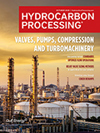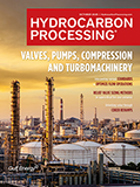Products
Phillips 66 and FreeWire Technologies bring ultrafast charging to EV drivers
Phillips 66 announced the installation of FreeWire ultrafast electric-vehicle chargers at its flagship fuel station near its headquarters in Houston, marking the debut of ultrafast EV charging at a convenience fuel station in the city.
DuPont announces global portfolio of Kevlar engineered yarns
DuPont Personal Protection announced the launch of a new portfolio of patented DuPont Kevlar engineered yarns, which combine cut and heat-resistant soft-spun Kevlar materials, high-strength inorganic yarns, and elastic stretch-core yarns.
2022 HP Awards Finalists
<em>Hydrocarbon Processing</em>, the downstream processing sector’s leading technical publication for 100 yr, has announced the finalists for its sixth annual <em>HP</em> Awards, which celebrate innovative technologies and people that have been instrumental in improving facility operations over the past year.
ASTM D5453 vs. D7039 and the importance of oxygen correction for B100 samples
The use of biodiesel is rapidly becoming more popular due to growing trends both inside and outside the petroleum industry.
Atlas Copco has acquired a distributor of compressors in New Mexico, USA
Atlas Copco has acquired the operating assets of the compressor business of Mesa Equipment & Supply Company.
Innovations
AW-Lake now offers a new Portable Transit Time Ultrasonic Flow Meter in addition to the full-sized clamp-on version that provides non-contacting flow measurement for the most challenging industrial environments with minimal installation complexity and costs.
Accelerating the transition to renewable fuels
The global push to neutralize carbon-based GHG emissions by 2050 not only holds great promise for the future of the planet, but it also stands to create millions of jobs, spur rapid growth and drive technological innovation.
Koch Technology, Ioniqa Technologies partner to disrupt plastics industry through advanced PET upcycling technology
As part of this collaboration, KTS has committed to invest up to €30 MM in Ioniqa. Ioniqa has developed an innovative process that utilizes low-grade post-consumer PET to infinitely produce a feedstock that displaces virgin raw materials used in the production of polyester products.
The Downstream Rundown: In case you missed it 09/16
In case you missed any downstream news, here are the top stories from last week. These articles include announcements from Clariant, Aemestis, Evonik, ADNOC, Technip and more. Stay up to sate with the latest industry news.
Technip Energies and APChemi announce cooperation agreement to commercialize APChemi's advanced plastic waste to high quality pyrolysis oil technology
APChemi's patented “Pyromax” pyrolysis technology for recycling plastic waste closes the gap in the plastic supply chain by taking dirty and mixed plastic waste.

- BGN announces strategic MoU with XCF Global to produce and supply SAF 11/17
- KazMunayGas and Uzbekneftegaz partner to build 50,000-tpy linear alkylbenzene plant 11/17
- Chevron joins race to explore potential purchase of Lukoil assets, including refineries 11/17
- Abra Group and Sumitomo sign MoU to advance affordable SAF in Brazil 11/17
- Sonatrach signs contract for unit with Sinopec subsidiary to boost gasoline production capacity 11/17
- Verso Energy awards FEED contract to Rely for the DEZiR eSAF project 11/17




